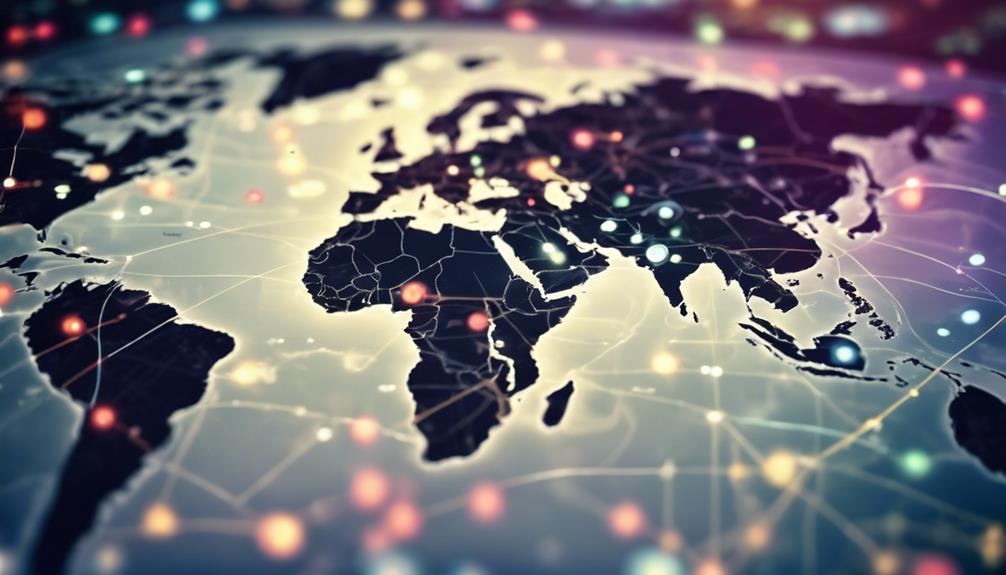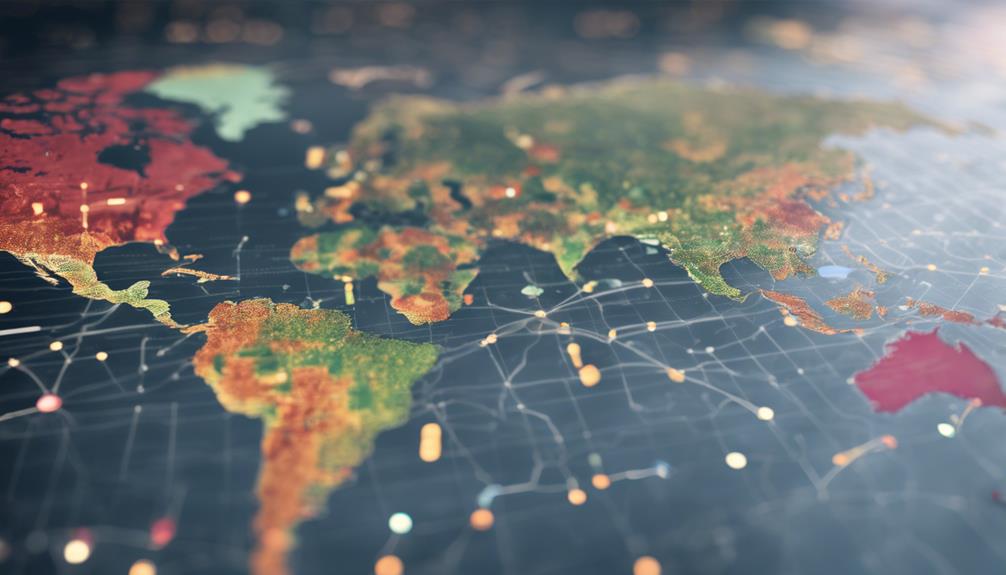Imagine geospatial data processing as a complex puzzle where each piece represents a different aspect of Earth’s intricate tapestry. Just like assembling a puzzle requires patience and precision, grasping the nuances of geospatial data processing demands attention to detail and methodical analysis. As you explore this topic further, you will uncover the key principles and techniques that unlock the hidden potential of spatial data, allowing you to navigate the digital landscape with confidence and insight.
Geospatial Data Overview
Understanding geospatial data involves analyzing spatial information that encompasses the physical properties and locations of objects on Earth’s surface. Geospatial applications have become increasingly essential in various fields, ranging from urban planning and environmental management to emergency response and agriculture. Spatial data analysis forms the backbone of geospatial applications, allowing for the interpretation of data in a geographical context. By processing and interpreting spatial data, geospatial analysts can derive valuable insights that aid in decision-making processes.
Spatial data analysis involves the manipulation and interpretation of geographic information to extract meaningful patterns and trends. This process often includes tasks such as mapping, modeling, and visualization to understand the relationships between different geographic features. Geospatial applications leverage spatial data analysis techniques to solve complex problems related to location-based information effectively.
Researching Data Processing Services
To implement geospatial applications effectively, researching data processing services is crucial for optimizing spatial data analysis techniques and enhancing decision-making processes. When researching data processing services, two key aspects to consider are data integration and quality assurance. Data integration involves merging different data sources to create a unified view, enabling comprehensive analysis and decision-making. Quality assurance ensures that the processed data is accurate, reliable, and meets the required standards.
Cloud computing plays a significant role in data processing services, offering scalability and flexibility to handle large volumes of geospatial data efficiently. Leveraging cloud computing allows for seamless access to resources on-demand, enabling faster processing times and cost-effective solutions for geospatial data processing.
Collecting Relevant Data Sources
How can you efficiently identify and gather the most relevant data sources for geospatial data processing? Data collection is a crucial step in geospatial analysis, as the quality of your data directly impacts the accuracy of your results. When considering data acquisition, focus on reputable sources to ensure data quality. Utilize various data collection methods such as satellite imagery, GPS data, surveys, and open data portals to gather diverse datasets for analysis.
To collect relevant data sources effectively, start by defining your project requirements and objectives. This clarity will guide you in selecting the appropriate data sources. Consider the spatial and temporal resolution needed for your analysis, as well as the format and compatibility of the data with your processing tools. Evaluate the reliability and credibility of potential data sources to prevent errors in your analysis.
Analyzing and Interpreting Data
Efficiently interpreting geospatial data involves applying analytical techniques to extract meaningful insights and patterns. Data visualization plays a crucial role in this process, allowing you to represent complex geospatial information in a visual format that is easy to comprehend. By utilizing tools like geographic information systems (GIS), you can conduct spatial analysis to uncover relationships between different data points based on their geographical locations.
Spatial analysis enables you to identify trends, clusters, outliers, and correlations within geospatial data sets. Through techniques such as spatial autocorrelation, hotspot analysis, and density mapping, you can gain a deeper understanding of the spatial distribution of your data. These methods help you uncover hidden patterns and make informed decisions based on the insights derived from the analysis.
Validating and Implementing Results
Validating results obtained from geospatial data processing involves rigorously assessing the accuracy and reliability of the analytical findings. Implementing strategies for validation is crucial to ensure that the processed geospatial data is error-free and aligns with the intended objectives. Data validation techniques play a vital role in this process by verifying the consistency, completeness, and correctness of the results.
To validate geospatial data processing outcomes effectively, it is essential to employ various validation methods such as cross-referencing with ground truth data, conducting statistical analyses, and utilizing error propagation techniques. These techniques help in identifying any discrepancies or inaccuracies in the processed data, ensuring that the results are valid and reliable for further decision-making processes.
Once the validation process is complete, implementing the validated results into practical applications is the next step. Implementing strategies involve integrating the validated geospatial data into geographic information systems (GIS), creating visual representations, and generating reports or models based on the processed data. By following systematic validation and implementation procedures, you can enhance the credibility and usability of geospatial data processing outcomes.
Frequently Asked Questions
How Can Geospatial Data Processing Benefit Disaster Response Efforts?
In disaster response efforts, geospatial data processing offers real-time monitoring and predictive modeling. This aids resource allocation and emergency response by providing precise location-based information, enhancing decision-making, and optimizing overall operational efficiency.
Are There Any Ethical Considerations When Using Geospatial Data?
When using geospatial data, you must consider privacy concerns and data security. Safeguarding personal information and ensuring secure data storage are essential. Ethical dilemmas arise in managing sensitive data and protecting individual privacy.
What Are the Limitations of Geospatial Data Accuracy?
In geospatial data, accuracy is crucial. Data validation and error correction are essential processes. Statistically, 90% of errors in satellite imagery and GPS accuracy can be mitigated through meticulous validation protocols and corrective measures.
How Can Geospatial Data Processing Contribute to Urban Planning?
To optimize infrastructure in urban planning, geospatial data processing helps by analyzing spatial relationships, identifying areas for development, and understanding the environmental impact. It enables informed decision-making and efficient resource allocation.
What Are the Key Trends Shaping the Future of Geospatial Data Processing?
So, you want to know what’s shaking up geospatial data processing? Brace yourself for the machine learning applications revolutionizing analysis and the seamless IoT integration enhancing real-time data collection, promising exciting advancements ahead.



